Making California rolls at home is easier than it looks! From rolling the bamboo mat, slicing the rolls, and enjoying these sweet and chewy rice treats, it’s a fun food project your entire family will love. Plus, it’s the perfect introduction for those new to sushi rolls, or those averse to eating raw fish.
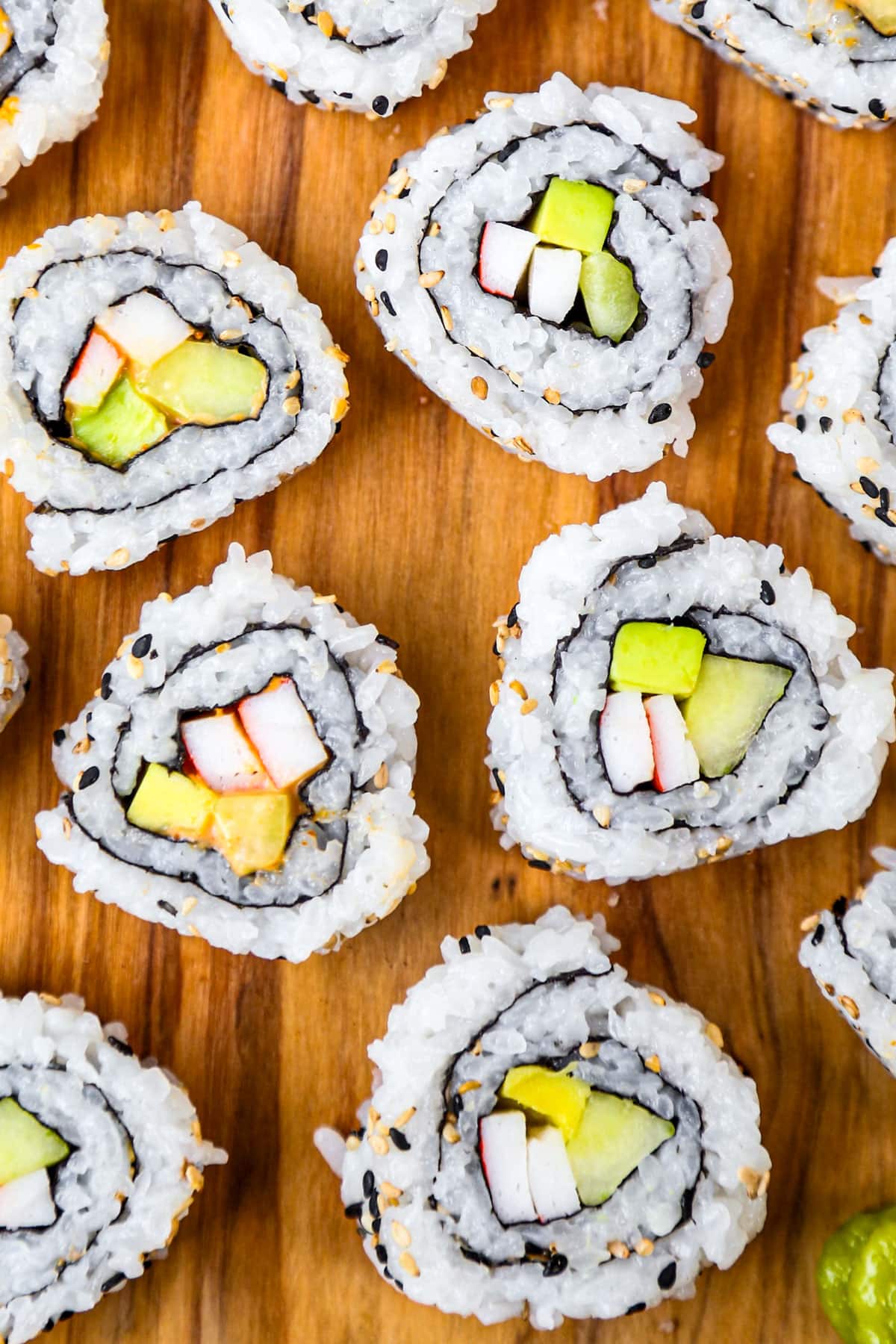
While I grew up eating plates of sashimi during my summers spent in Japan, my husband Ben, was busy eating California rolls somewhere in the Midwest. It’s not until I lived in Toronto, Canada, in my twenties, that I had my first taste of it and wondered why it wasn’t on any menus in Japan.
That’s until I read that the California roll was invented in Los Angeles during the 1960s, by a chef named Ichiro Mashita. His goal was to serve a type of roll that would appeal to those who were not accustomed to eating raw fish. The success of it became so big that he is now credited for being the catalyst for the popularization of sushi outside of Japan.
With its well-balanced flavor profile – the sweetness of the crab meat, the creaminess of the avocado, and the refreshing crunch of the cucumber – it’s no wonder why the California roll became so loved by everyone, including myself.
And while certain sushi recipes require a ton of finesse and training (maybe better left to the pros) – these easy to make sushi rolls (maki) can be made in your own home kitchen with an absolute minimum of fuss.
Table of contents

What Is A California Roll?
The California roll is a type of sushi roll originating from California. It’s made with sushi rice as a base, seaweed (nori) either on the outside or the inside (depending on how it’s served), and a mix of imitation crab meat, avocado, and cucumber, as a filling. If the rolls are wrapped inside out, meaning the rice is on the outside, it can be sprinkled with some sesame seeds or tobiko (flying fish roe).
The rolls are sometimes seasoned with a spicy mayonnaise too, which I have for you as an option for this recipe.
Kitchen Tool Needed
To make these rolls you will need to have a few kitchen tools on hand. They are very easy to find and can be purchased on Amazon at a reasonable price.
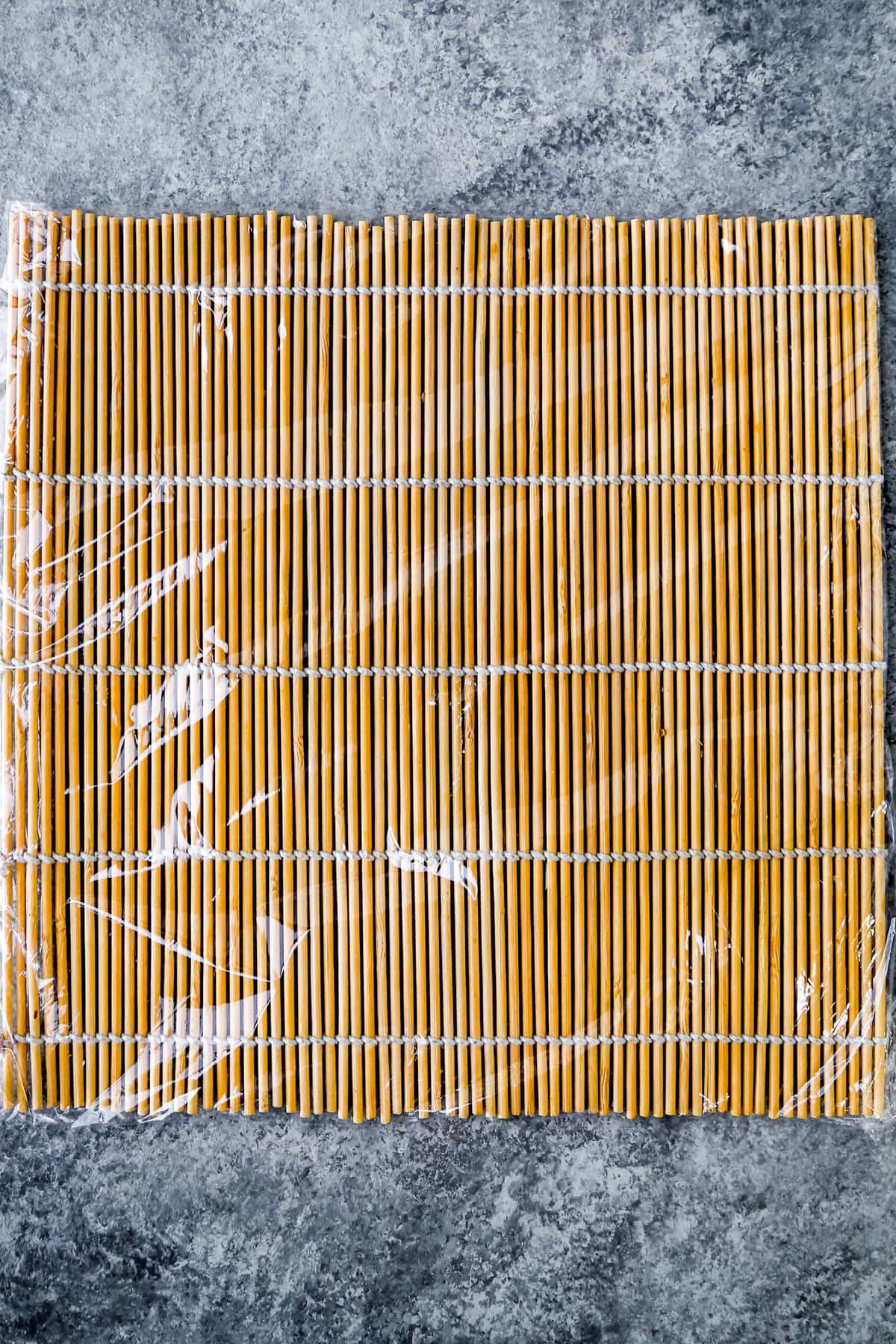
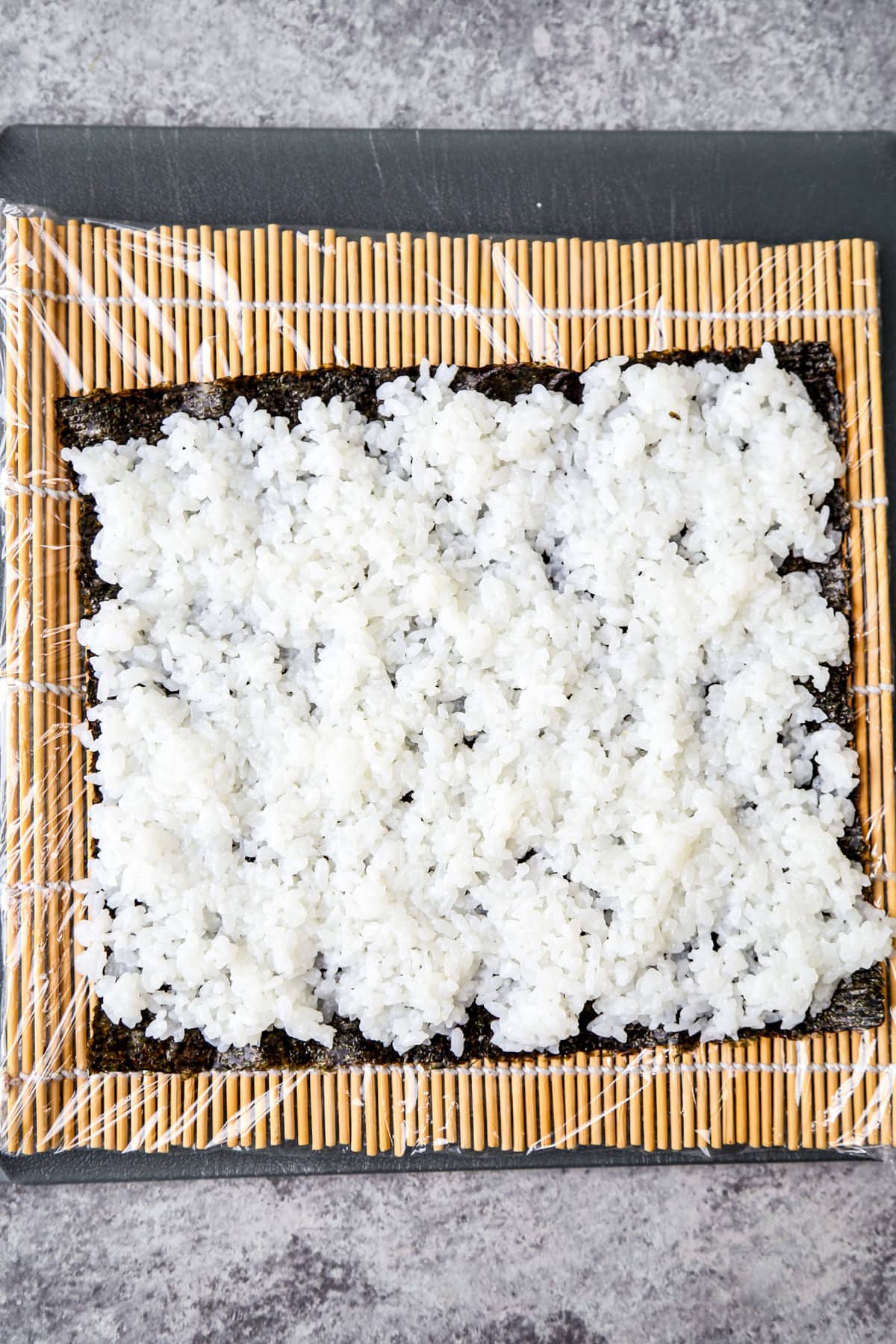
California Roll Ingredients
- Seaweed (Nori): You will need lightly toasted nori sheets to make maki rolls. The seaweed cannot be too crispy otherwise it will break during the rolling process. Size wise, a regular full square nori sheet is what we are looking for.
- Sushi Rice: A mix of cooked Japanese short grain rice, rice vinegar, sugar, and salt. Scroll down to see how to make sushi rice, or click here for a full tutorial.
- Cucumber: English or Japanese cucumbers are the best because they are long and don’t contain a lot of seeds. In fact, these are the only types of cucumbers I would recommend using when making rolls.
- Avocado: You will need a ripe avocado but not so soft that it squishes to the touch. It should hold its shape so it looks nice when sliced and served as part of the filling mosaic.
- Imitation Crab: Imitation crab, also called surimi, adds sweetness and a slight seafood taste to the rolls. Look for crab sticks called kanikama or kani-kamaboko in Japanese, for the classic type of imitation crab used in California rolls.
- Sesame Seeds: You can use black or regular sesame seeds to add a little nuttiness. Or, you can use a mix of both like I have done for my makis.
- Spicy Mayonnaise (Optional): A mix of mayonnaise and sriracha sauce. It adds a creamy and spicy element for those who like spicy tuna rolls.
- Soy sauce and wasabi: Always use a Japanese soy sauce such as Kikkoman or Yamasa as they are more complex in flavor. If you can find fresh wasabi, you will get a spicy aroma without the heat. Real wasabi is sweet and grassy and very hard to find outside of Japan. Store bought wasabi and the one that’s served in most Japanese restaurants isn’t real wasabi. It’s most often made of horseradish that’s been dyed green. But we still love it and there’s nothing that can clear my sinuses as well as fake wasabi can!
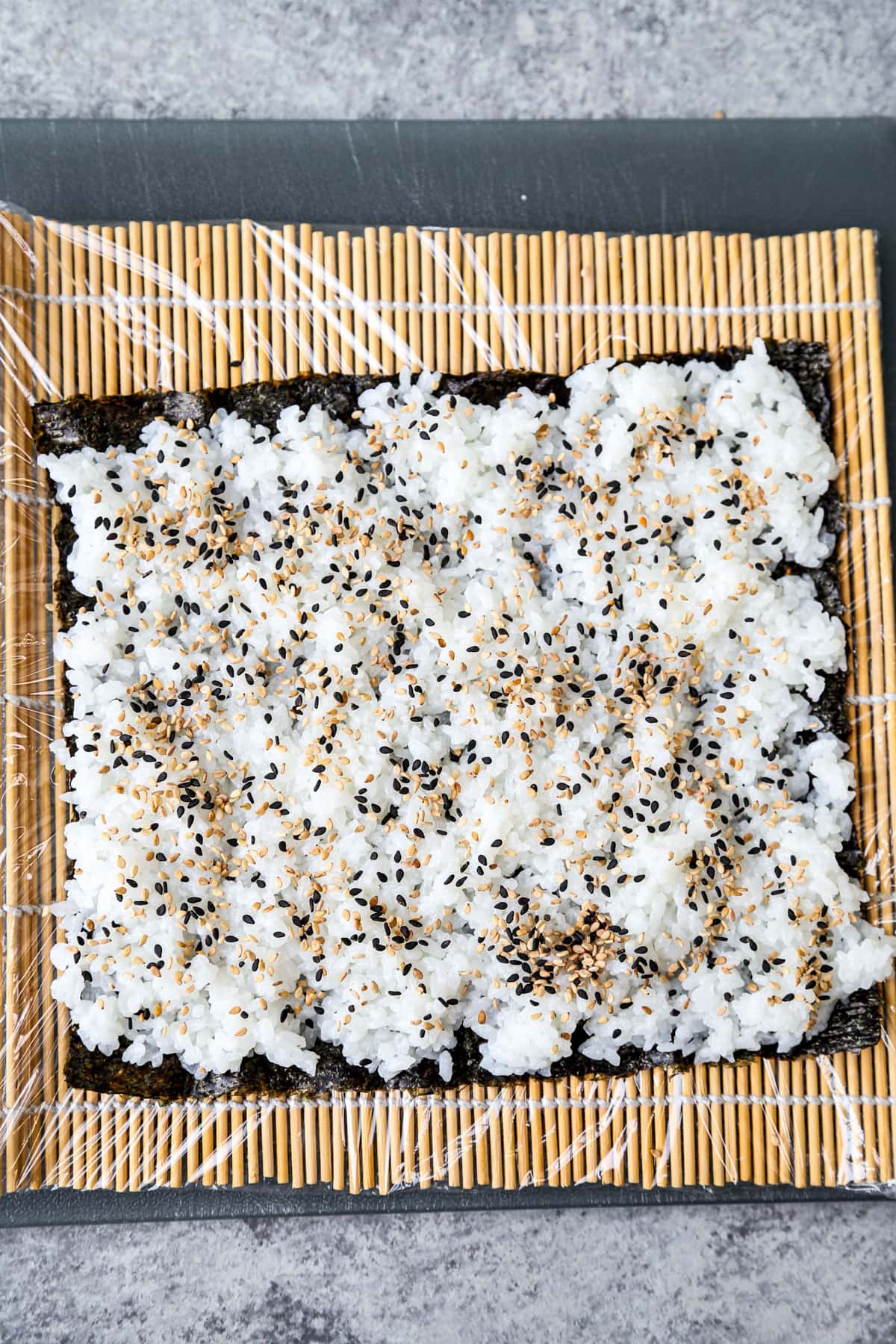
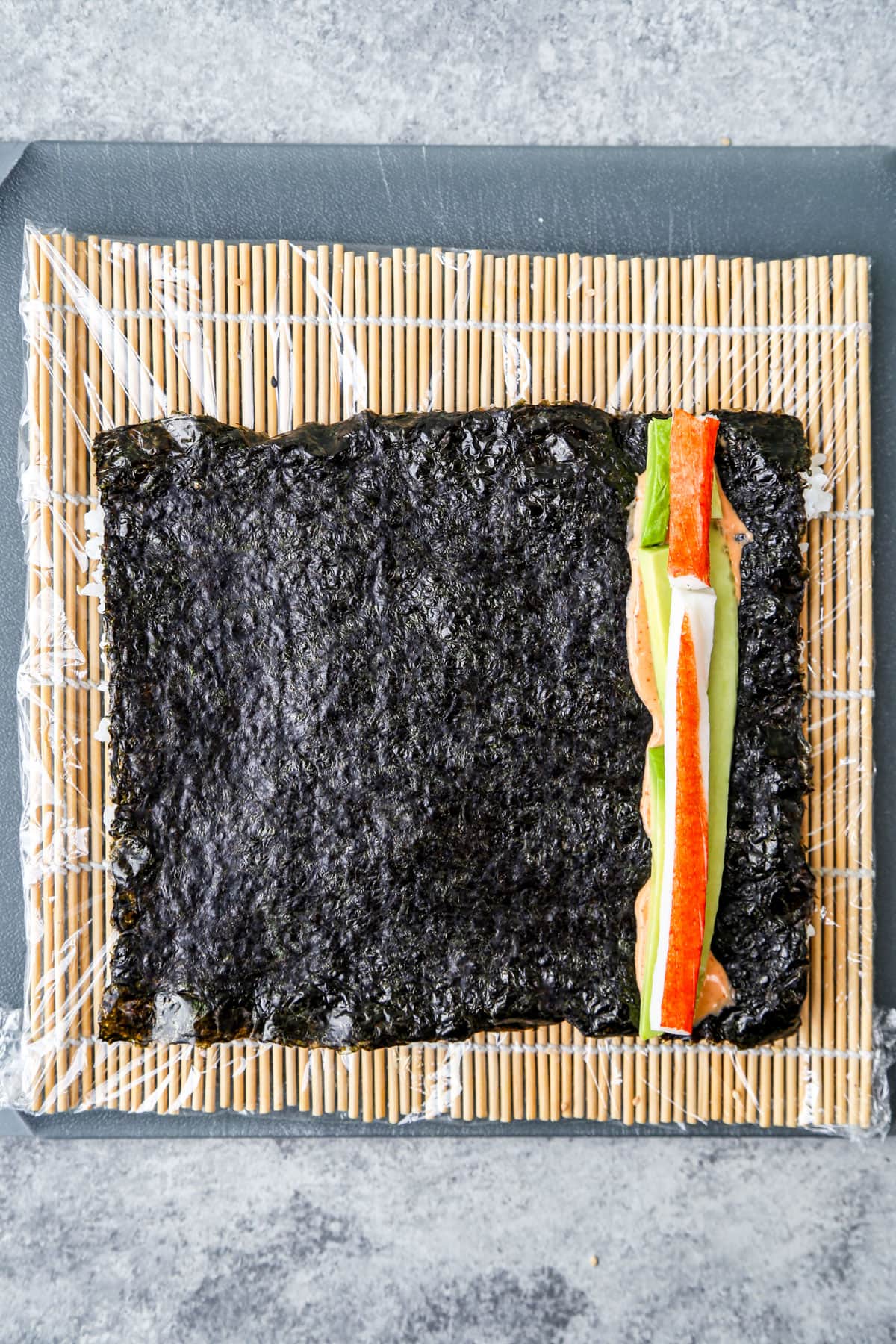
How to make a California roll
- Prep all of your ingredients and gather your kitchen tools.
- Wrap the bamboo mat with plastic wrap and lay it on a cutting board of the kitchen counter. Place a sheet of seaweed in the center of the bamboo mat, shiny side down.
- Scoop 1 cup of sushi rice and place it in the center of the nori sheet. Moisten your fingers with water (so the rice doesn’t stick) and spread the rice until it reaches the edges of the seaweed.
- Next, sprinkle about a half-teaspoon of sesame seeds on the rice. Gently flip the nori sheet so the rice is facing down.
- Place a mix of imitation crab, avocado, and cucumber to the edge of the nori sheet that’s closest to you, so the ingredients run from end to end across the seaweed sheet.
- Grab the bottom edges of the mat with your thumbs and hold on to the toppings with your fingers. Roll everything into a semi-tight cylinder.
- Lift the edges of the bamboo mat with your fingers so it doesn’t get rolled into your sushi roll (the mat should look like the letter C from the side as you roll forward). Keep rolling forward using a little pressure and let go when the roll has formed.
- Run a wet paper towel or towel across your chef’s knife and slice the roll into bite size pieces.
- Serve with wasabi, soy sauce, and pickled ginger.
To make sushi rice : mix 3 cups of cooked Japanese rice that is at room temperature or a little warmer, with 1 tablespoon of sugar, ¾ teaspoon salt and 40 ml of rice vinegar. Using a rice paddle, gently fold the rice onto itself a few times to mix the ingredients. Do this a few times but don’t overdo it as it can make the rice mushy.
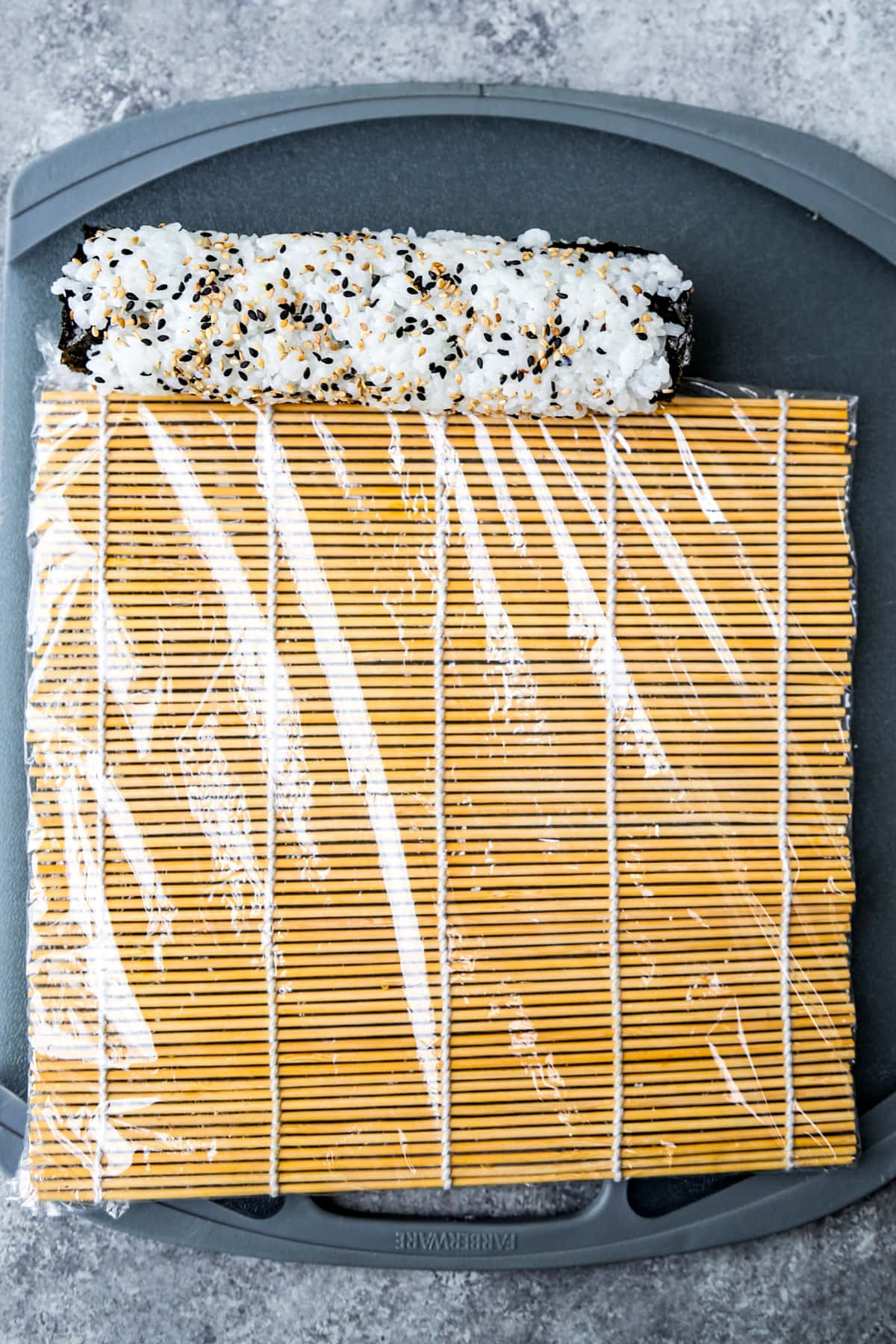
Different Sushi Types
If you’ve ever wondered how to make sushi at home, there are more than a few classifications to familiarize yourself with. Most sushi starts with raw fish called sashimi in Japanese. Sashimi can be served on it’s own or in the form of sushi.
The two most common types of sushi seen in the West are:
- Nigirizushi or nigiri sushi – which is sashimi served on top of oblong shaped sushi rice.
- Makizushi or maki sushi – which are cut sushi rolls.
Within the world of makizushi there are further distinctions. For example, there’s:
- Futomaki (太巻き), which means fat sushi rolls. Those are the big rolls that take more than one bite to eat, usually filled with various ingredients.
- Hosomaki (細巻き), which means thin rolls. These rolls are made using only one filling such as cucumber (kappa maki) or tuna (tekka maki).
- Uramaki (裏巻き), which loosely translates into inside-out roll, like this California roll recipe where the rice is on the outside.
If you would like to know more about the different types of sushi, I have a post called Nigiri vs Musubi vs Maki vs Sushi vs Sashimi: What’s the Difference?, that you might be interested to read.
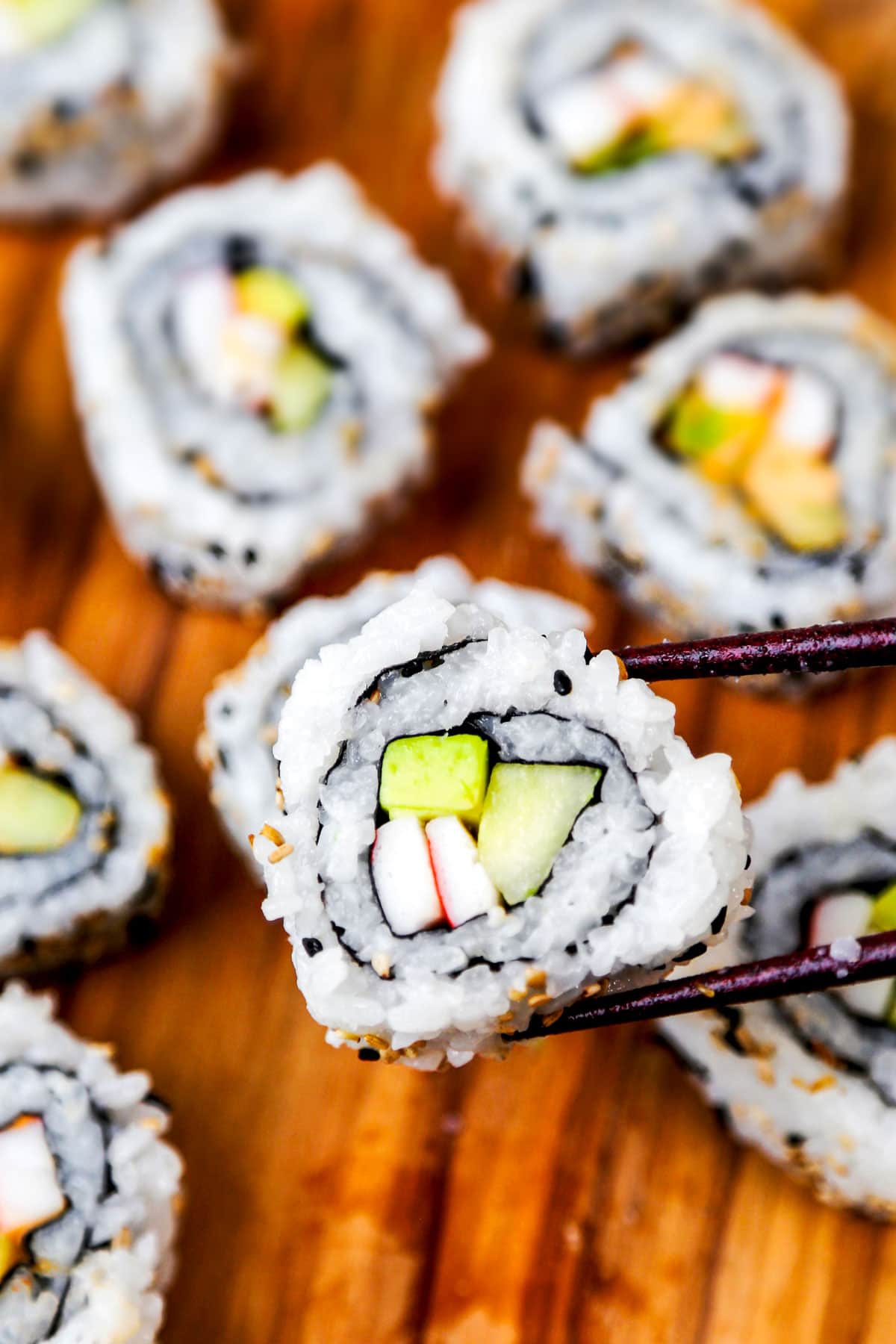
Storage
It’s essential to refrigerate any type of sushi or maki since rice can develop bacteria after a few hours left at room temperature.
- Wrap each California roll individually in plastic wrap. This will prevent the rice from drying too much.
- Place them in an airtight storage container and refrigerate for up to 2 days.
- To get a more pleasant rice texture, take the rolls out of the fridge and leave them on the counter 30 minutes to 1 hour before eating.
Frequently Asked Questions
Yes you can. If you are using crab from a can, make sure it’s properly drained before using it. But keep in mind that imitation crab (kanikama) is the industry standard, and what most diners expect to see, when it comes to the crab in a California roll.
No it isn’t. You will not find California rolls sold in Japan as it very much is an American invention (created by a Japanese chef). However, you will find cucumber rolls and you may seldom find avocado rolls.
Yes you can, as long as it’s prepared in a clean environment. For pregnant women, raw fish is the one ingredient in sushi that must be avoided. So, sushi made with vegetables and cooked ingredients should not be a problem.
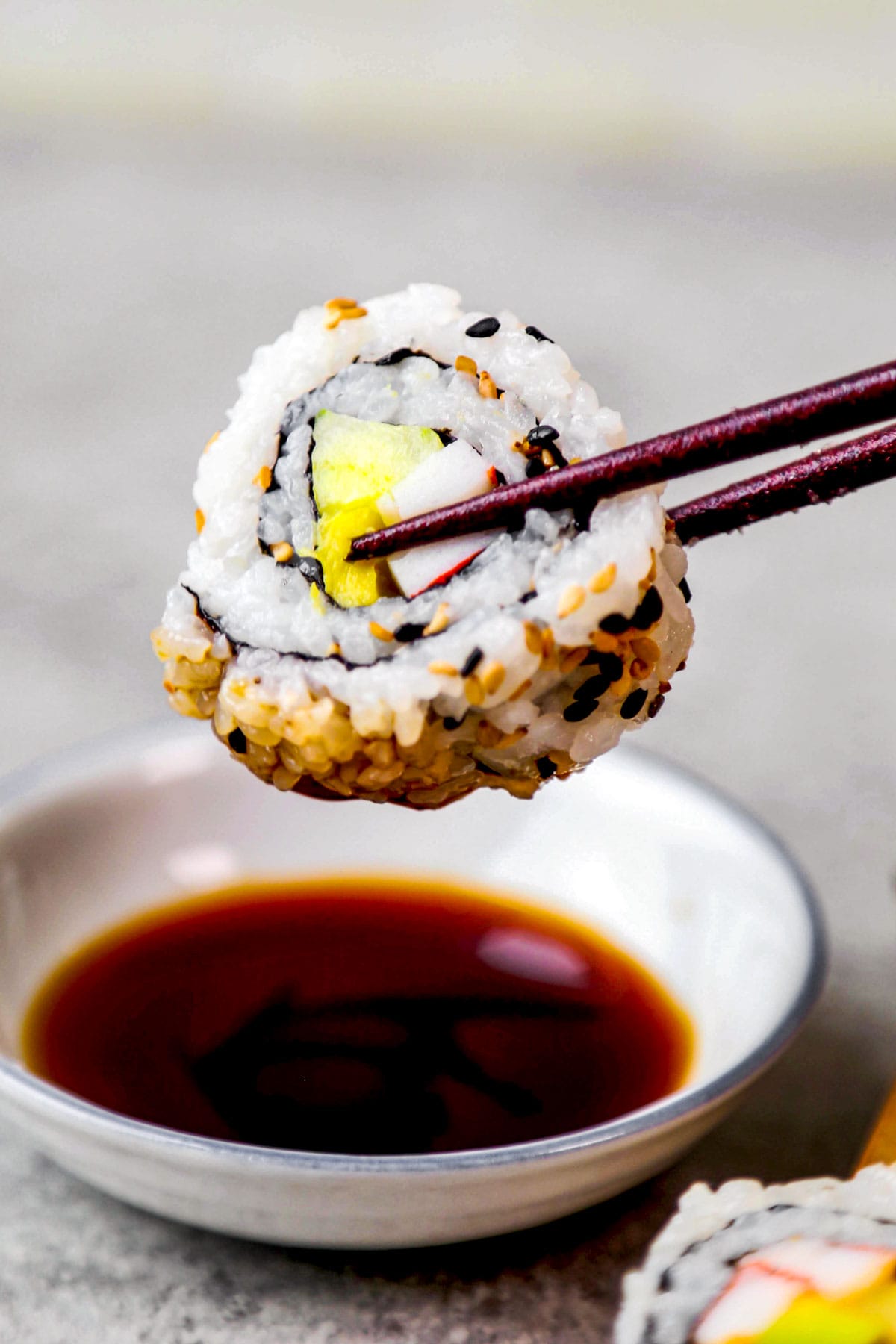
What to Serve with California Roll
These maki rolls can be served as a side or a snack with a refreshing lemon sour. It can also be served as part of a healthy meal or a family style dinner. I like to serve them with other Japanese dishes such as:
- Miso soup
- Green salad with carrot ginger dressing
- Shio ramen
- Shrimp tempura
Subscribe to my newsletter and receive the latest recipes and weekly favorites straight to your inbox. Join me on Pinterest, Facebook, and Instagram for more cooking tips and adventures!
Did you like this recipe? Are there changes you made that you would like to share? Share your tips and recommendations in the comments section below!
Print
California Roll
- Prep Time: 25 minutes
- Cook Time: 0 minutes
- Total Time: 25 minutes
- Yield: 4 to 6 maki rolls 1x
- Category: Rice
- Method: Hand Rolling
- Cuisine: Japanese
- Diet: Vegetarian
Description
An easy California roll recipe that can be served as a snack or as part of a Japanese style meal.
Ingredients
- 3 to 4 nori sheets
- 4 cups sushi rice (click here to learn how to make sushi rice)
- 1/4 English cucumber, peeled, seeded and sliced into sticks
- 1 avocado, peeled, pitted and sliced into 1/4-inch thick sticks
- 1/4 pound imitation crab, sliced into stick
- 2 tablespoons sesame seeds
Spicy mayo (optional)
- 2 tablespoons mayonnaise
- 2 tablespoons sriracha sauce
Instructions
- Wrap a bamboo mat with plastic wrap and place it on a flat surface or over a cutting board. Fill a small bowl with water and a little rice vinegar and place it next to the bamboo mat.
- Lay a sheet of nori, shiny side facing down on the bamboo mat and place about 1/2 cup of rice in the center of the sheet.
- Wet your fingers with vinegar water and spread the rice evenly across the nori sheet.
- Sprinkle sesame seeds evenly across the rice (about 1 teaspoon).
- Turn the nori sheet over so the rice is facing down and carefully slide the sheet close to the edge of the bottom of the bamboo mat.
- Place the cucumber, imitation crab, and avocado at the bottom of the nori sheet.
- Grab the bottom edges of the mat with your thumbs while holding on to the toppings with your other fingers. Roll it into a tight cylinder, tucking the fillings in firmly and slightly lift the edge of the bamboo mat.
- Roll it forward while using a little pressure but not so much that the filling spills out. Let go of the mat when you get to the other end.
- Cut the roll in half and each half into thirds.
- Serve with soy sauce and wasabi on the side.
For spicy California rolls: Start by spreading the spicy mayonnaise across the bottom of the nori sheet (about 1 teaspoon or a little more if you want more flavor) and top with cucumber, imitation crab, and avocado. Follow the rest of the recipe as written.
Nutrition
- Serving Size: 1 roll
- Calories: 394
- Sugar: 7.9g
- Sodium: 775mg
- Fat: 15.5g
- Saturated Fat: 2.7g
- Unsaturated Fat: 5.4g
- Trans Fat: 0g
- Carbohydrates: 56.2g
- Fiber: 5.2g
- Protein: 8.2g
- Cholesterol: 8.5mg
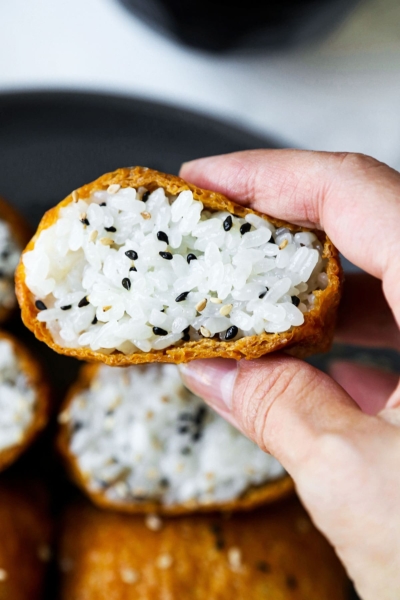
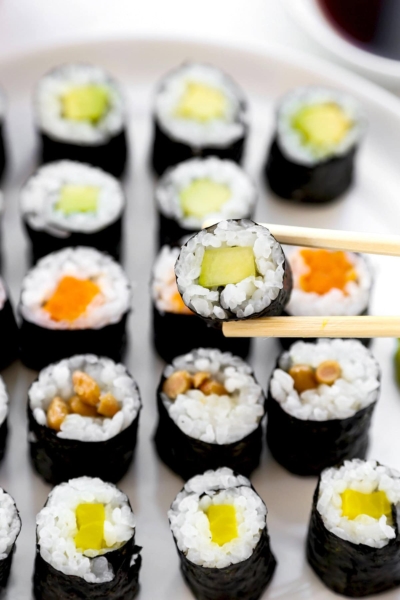

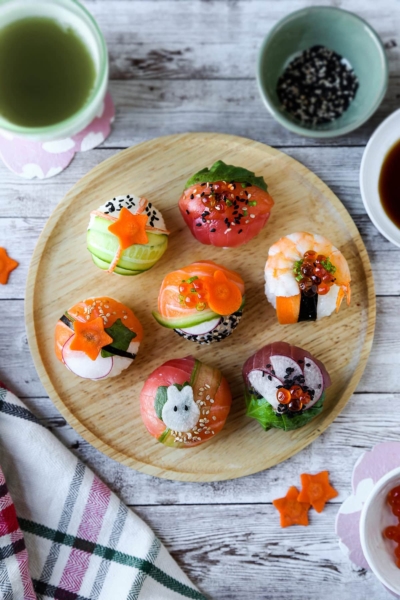














Questions and Reviews
My first time doing this sushi . I Love sushi but now I want to learn how to make it.
It sounds delicious.